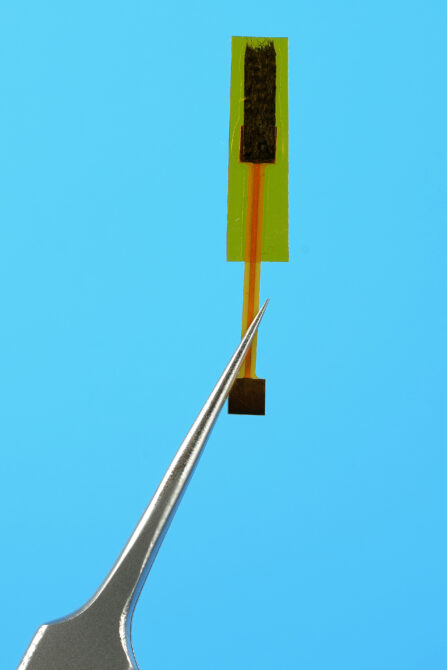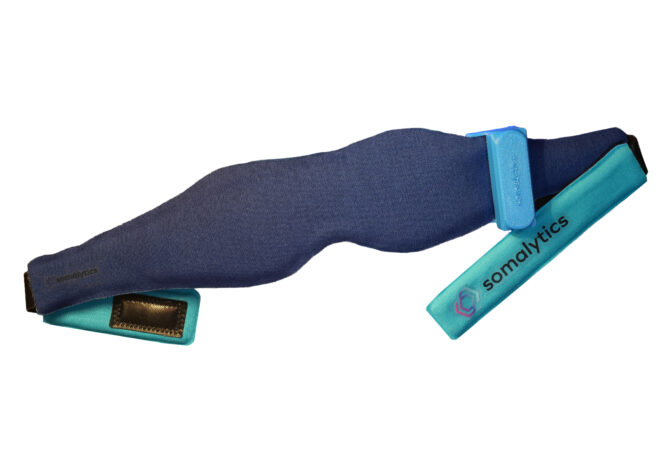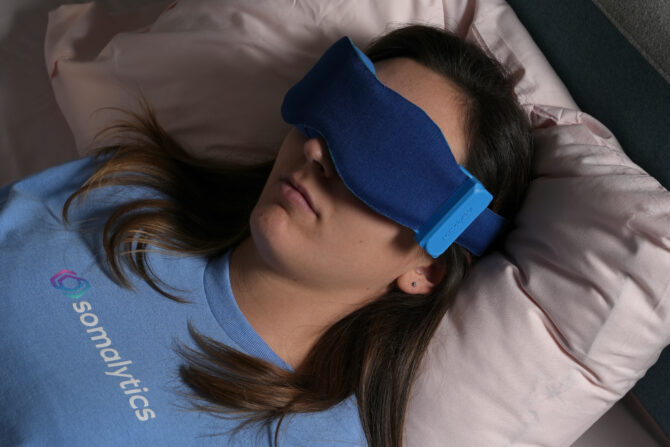
Capacitive sensor delivers human touch
Stephen Law
Electronics Embedded Systems Engineering IoT Medical Wearable Technology carbon-nanotube composite CPC Editor Pick embedded IoT paper Sensor Somalytics Technology wearableMiniature paper carbon nanotube capacitive device
Somalytics Inc., a Redmond Wash-based developer of disruptive technology related to human machine interaction is revolutionizing the Internet of Things (IoT) and consumer interactions with its ground-breaking, paper-based capacitive sensors. These devices enable new levels of gesture control, eye tracking and Human-Machine Interaction (HMI). As a CES Innovation Award honoree, Somalytics is driving changes in all categories of tech.
————————-
EP&T joins Somalytics CEO Barbara Barclay in conversation to learn more about the firm’s cutting-edge technology.
How does the SomaCap sensor operate.
The SomaCap is a new type of capacitive sensor that allows consumer product manufacturers and developers to advance the human experience with IoT.
These are ultra-high sensitivity, fast response, capacitive sensors built using substrate filled with carbon nanotubes, therefore creating a carbon nanotube-infused paper that can ‘feel’ human presence at up to 200 millimeters.
They are a new valuable embedded technology for companies working to improve customer experiences with products through more natural and intuitive human-machine interactions.

Somalytics’ SomaCap sensor.
Photo by Marcus Donner / Somalytics © 2022
What materials are integral to the sensor’s operation?
The SomaCap capacitive sensors are made from patented carbon nanotube composite (CPC), which we manufacture by infusing paper with carbon nanotubes. The paper is water printed, fractured and the sensor is encased in Polyethylene Terephthalate (PET.) The water-induced fracture reorganizes CPC fibers parallel to each other, increases the surface area, and enables contact and non-contact detection modes.
What design applications is it most suited for?
SomaCap sensors are the world’s smallest nano-based capacitive sensors. Due to their sensitivity, they can be used for eye tracking, gesture, control touch and fluid monitoring and can improve the human experience in consumer electronics, AR/VR, IoT, health & wellness and transportation.
What are the most defining features of these sensors?
It’s their ability to deliver such a high level of sensitivity in a smaller size and at a lower cost than other available sensor technologies. They range in size from 1mm to 11mm in diameter and detect human tissue up to 20cm away.
The sensors are low latency, less than 3ms, and operate at a speed up to 1,000Hz. These properties enable the human experience with digital technology and IoT to evolve in ways that were previously not possible.

Somalytics’ SomaSleep sleep mask.
Photo by Marcus Donner / Somalytics © 2022
What elements are critical for SomaSleep eye-tracking sleep mask to have success in the sleep study field?
SomaSleep is a first-of-its-kind sleep mask that uses eye tracking to unmask the wellness challenges preventing better sleep by collecting data never before possible through an in-home device.
The sleep mask can track eye movement, including Rapid Eye Movements, to help consumers better understand sleep stages, quality, and disruptions that are key to wellness insights and improving sleep.
Sleep problems affect the lives of billions of people and understanding the quality of sleep is at the heart of the solution. REM is critical for learning and memory. Things such as snoring, back and leg problems, medication, anti-depressants, concussions, stroke, and other neurologic illnesses can disrupt sleep and in particular, REM.
Until now the only option to track REM was through sleep centers, where data is typically manually interpreted. With SomaSleep, we are enabling consumers to track all stages of sleep including REM in the comfort and privacy of their own homes through a lightweight, easy to use sleep mask.
The mask has SomaCap sensors embedded that capture eye tracking data relevant to this critical analysis of sleep quality. This is a transformational moment for in-home wellness and our team is thrilled to have a role in bringing to market such an important product.

Somalytics’ SomaSleep sleep mask – woman sleeping.
Photo by Marcus Donner / Somalytics © 2022
What are the advantages of designing with a Somalytics sensor in replacement of passive infrared (PIR) sensors?
Somalytics sensors are faster and better than infrared. Our sensors can detect human presence at 200mm by sensing the electric charge emitted by a human, which displaces the electric field of the sensor.
Compared to existing capacitive sensors, Somalytics’ are 100 times smaller and 10 times faster, with greater range for sensing proximity and pressure. Offering unprecedented sensitivity to human tissue, the sensors acknowledge human presence at up to 20 centimeters.
They work with any skin tone or eye shape and recognize 3D gestures without the need for any hand device. All of this enables a new generation of touchless technology applicable to almost any interaction between humans and machines.
In terms of eye tracking, Somalytics’ sensors will open an entire new era for wearables because the sensors are not camera based and there is no illumination of the eye required.
The processing speed is under three milliseconds, and the sampling rate is 10 times faster than best-in-class existing technologies. With Somalytics’ sensors, eye tracking will evolve to accomplish the ‘real feel’ and ‘real-time eye to eye’ experience for which augmented and virtual reality users have long waited.

Somalytics’ SomaCap sensor.
Photo by Marcus Donner / Somalytics © 2022
How do you see this CNT-based paper composite capacitive sensor fitting with the emerging trends?
We believe Somalytics is bringing the sensor and embedded technology industry a major transformational milestone. We have developed the world’s smallest nano-based capacitive sensors made of carbon-nanotube paper composite (CPC), effectively establishing an entirely new category of sensor technology. Miniature and highly sensitive to the human body, they can also be used for eye tracking as well as proximity sensing, gesture control, touch, and fluid monitoring. Our sensor innovations will dramatically advance the human experience through market segments such as consumer electronics, AR/VR, the Internet of Things, health and wellness, and transportation.
